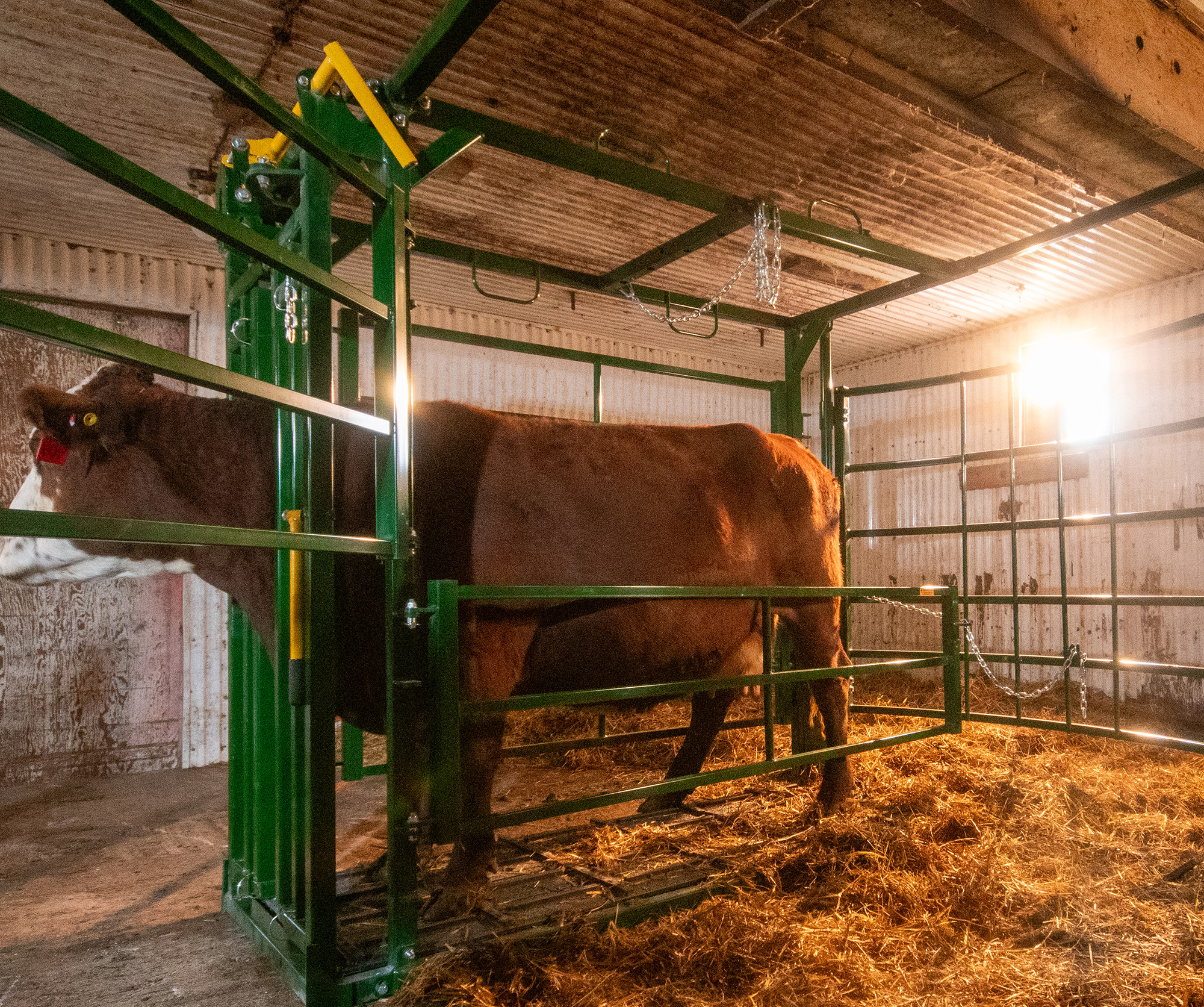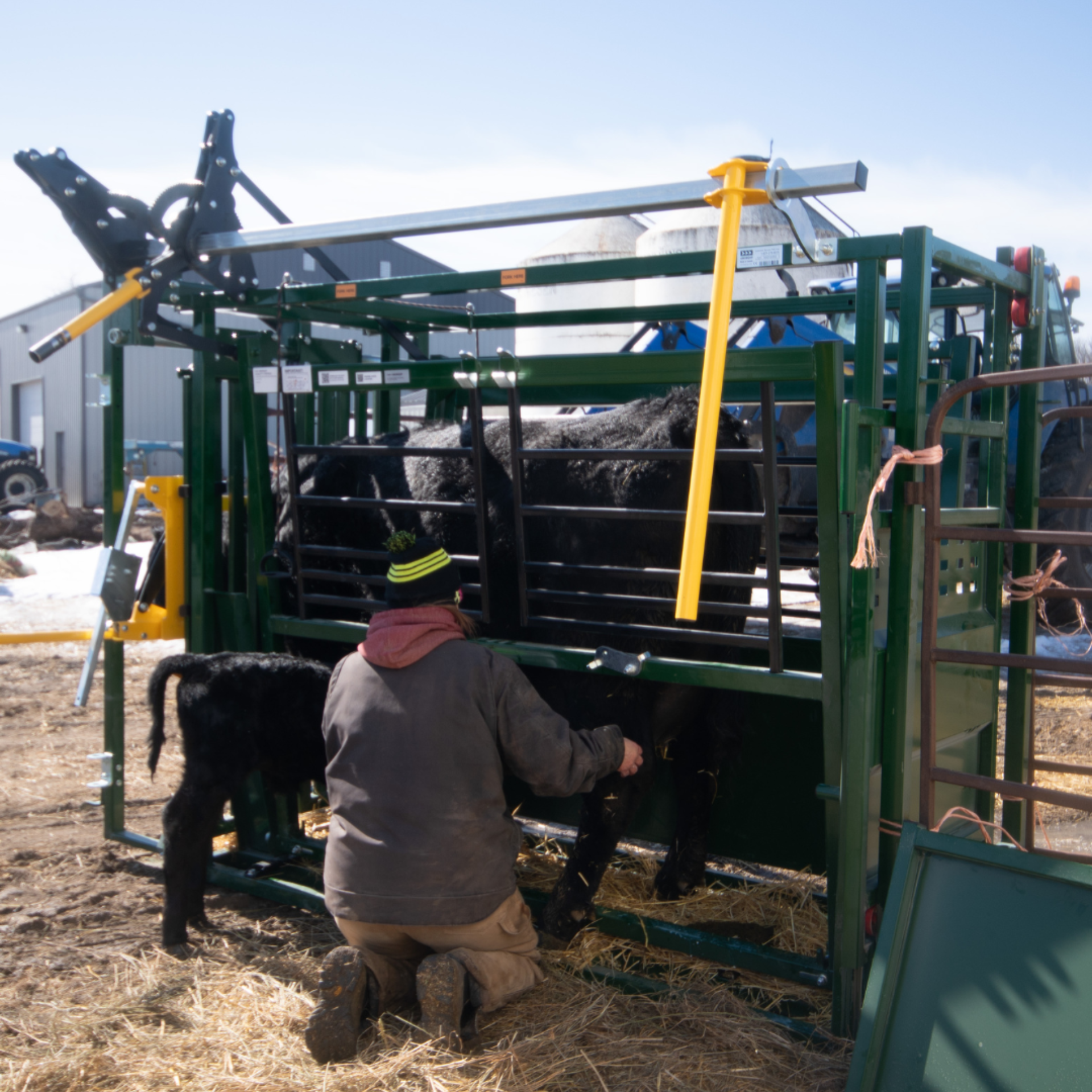8 Important Things to Look For in Your Cattle Maternity Pen
What Every Rancher Should Look for in a Safe, Functional Calving Pen
Go Back to All BlogsPosted on: November 25, 2025
Updated on: December 10, 2025
Author: Dana Charban
SHARE:
Calving season looks different on every operation, but the fundamentals of a safe, low-stress maternity pen stay the same. Whether your setup is indoors, outdoors, permanent, or portable, these eight elements help support smooth deliveries, healthier calves, and safer working conditions.

1) Access
You need to safely reach both cow and calf for assistance, treatment, or emergencies.
Access varies by indoor/outdoor setup, but should always include:
A head gate or restraint
Clear alleys for moving cattle
Room for handlers to work safely
Indoor pens should also allow skid-steer access for easier cleaning. Outdoor pens should be located near a barn or chute for quick transitions.
2) Water Availability
Cows require more water while calving, and handlers may need hot or cold water for delivery support and newborn care. Ensure a clean, reliable water source is close to the pen.
3) Privacy
Cattle prefer to calve alone.
Indoor pens should be at least 12 ft x 12 ft, well-lit, and designed to give cows privacy while still allowing handler access. Outdoor setups can include windbreaks or secluded areas cows naturally gravitate toward.
4.) Biosecurity
Newborn calves have little to no immunity, so sanitation matters.
Your calving pen should include:
Fresh bedding changed between uses
Ventilation
Disinfection between calvings
A base of clay, sand, or concrete (noting concrete can be slippery)
Outdoor pens still require dry bedding, especially during wet or muddy periods.

5) Flexibility
Every calving situation is different. A functional maternity area should adapt as needed, which may include:
A portable chute
A mobile head gate
The ability to move cows and calves easily to a hospital or holding area
Flexibility ensures you can meet needs quickly, wherever the cow is located.
6) Calving Supplies
Before calving starts, check your livestock first-aid and calving kit. Common essentials include:
OB gloves
Halters
OB chains
Calf puller
Colostrum replacer or powdered colostrum
Calf sled for moving newborns
Make sure everyone working the pen knows where supplies are and how to use them.
7) Acclimation
Cattle handle better in familiar environments.
Expose cows to the maternity area, handlers, alleys, and post-calving pens ahead of time. This reduces stress and makes movement easier during calving.
8) Calf Rearing Space
Prepare for situations where a cow won’t raise her calf or you must care for an orphan.
Your setup should include:
A small pen or shelter for bottle calves
Bottles, nipples, powdered colostrum
The ability to milk a cow safely using a head gate
You can also freeze extra colostrum from cows that lose calves or have a surplus.
Every operation is unique, but being prepared with a well-designed maternity pen supports healthy calves and safer calving for both handlers and cows. Veterinarians and local Cooperative Extension resources are also valuable when designing or improving your setup.